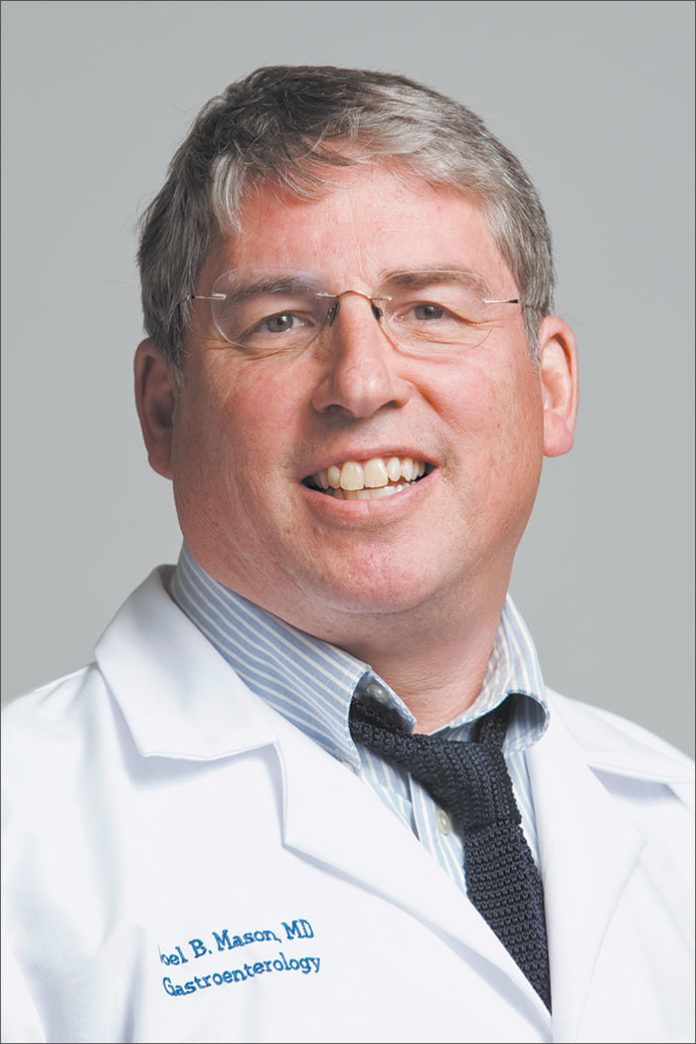Reporting on the annual meeting of the American Association for Cancer Research earlier this year, the New York Times noted, The latest results about diet and cancer were relegated to a single poster session and a few scattered presentations. Previous high hopes that specific dietary changes might combat cancer risk have largely evaporated, the Times reported, in the wake of more thorough epidemiology. The report summed up: About all that can be said with any assurance is that controlling obesity is important, as it is for heart disease, type 2 diabetes, hypertension, stroke and other threats to life. Avoiding an excess of alcohol has clear benefits. But unless a person is seriously malnourished, the influence of specific foods is so weak that the signal is easily swamped by noise.
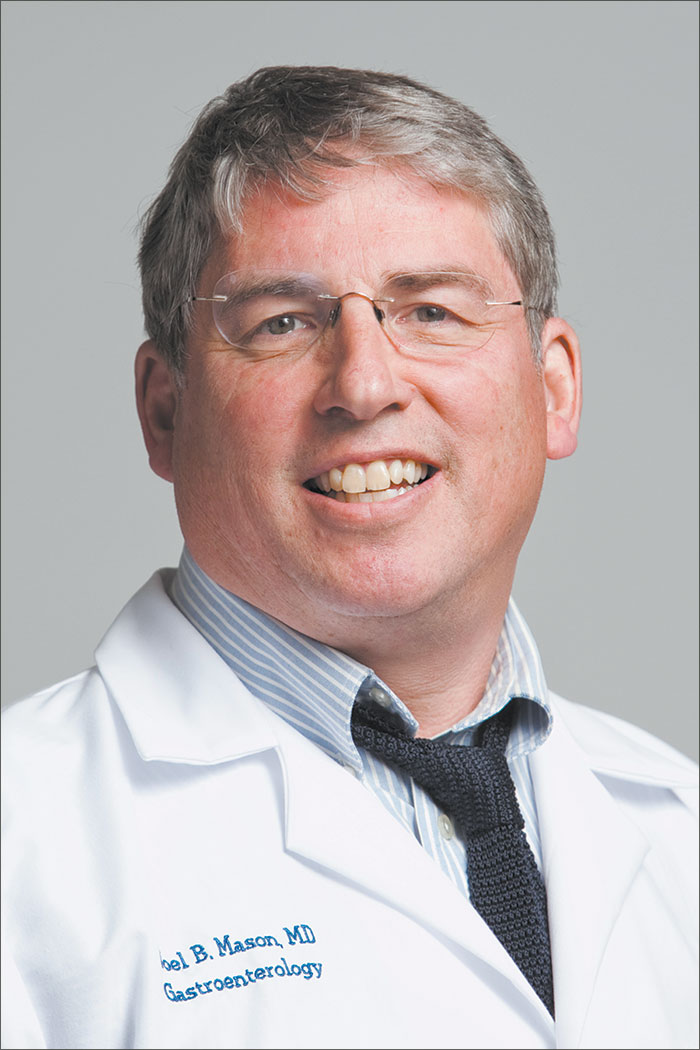
Dont give up so quickly on links between diet and cancer risk, however, says Joel B. Mason, MD, Tufts professor of medicine and nutrition and director of the HNRCA Vitamins and Carcinogenesis Laboratory. I do agree that among all the nutrition variables, obesity seems to play an overarching role in determining cancer risk, Dr. Mason says, but I also would argue that there are compelling observations to indicate that there are several other aspects of our diet that play a significant role in defining the cancer risk on an individual and population level.
Indeed, another cancer organization, the American Institute for Cancer Research
It is true, she conceded, that diet plays a more central role in some types of cancer than in others. AICRs Continuous Update Reports on cancer research, for example, have concluded:
– Diets high in whole grains and other foods containing fiber protect against colorectal cancer.
– Diets high in carrots, squash and other foods containing carotenoids reduce the risk of mouth, pharynx and larynx cancers.
– Diets high in non-starchy vegetables-such as broccoli, lettuces and beans-protect against esophageal cancer.
– Cutting processed meat out of the diet, and moderating red meat intake to no more than 18 ounces (cooked) per week, reduces the risk of colorectal cancer.
– Foods high in vitamin C probably lower the risk of esophageal cancer.
– Foods high in lycopene probably lower the risk of prostate cancer.
AIM FOR OVERALL DIET: How do these findings translate into actual food choices at the grocery store and on your dinner table? Its clear that theres no magic bullet-no single food you can eat that will significantly lower your risk of cancer. And a dietary pattern designed to reduce your cancer risk looks an awful lot like the healthy, balanced diets youve read about in this
newsletter that can also help protect you against cardiovascular disease and other chronic diseases. According to the AICR, In laboratory studies, many individual minerals, vitamins and phytochemicals demonstrate anti-cancer effects. Yet evidence suggests it is the synergy of compounds working together in the overall diet that offers the strongest cancer protection.
But the AICR has also collected the evidence for a range of specific cancer-fighting foods that represent smart choices as part of an overall healthy diet. Along with other foods for which the organization is in the process of updating the research (see box next page), these are among the most promising candidates for cancer prevention. Choosing these more often as part of an overall healthy diet is a good start on a plan that will reduce your cancer risk:
Apples
A good source of fiber and vitamin C, apples also contain a variety of phytochemicals that scientists are studying for anti-cancer effects, including quercetin, epicatechin, anthocyanins and triterpenoids. (Note that many of these compounds are concentrated in the peel.) Gut bacteria can use pectin, a major portion of apples dietary fiber, to produce compounds that protect colon cells.
Blueberries
Among the fruits highest in antioxidant power, blueberries contain phytochemicals including anthocyanins, catechins, quercetin, kaempferol and other flavonoids, ellagitannins and ellagic acid, pterostilbene and resveratrol. In cell studies, blueberry phytochemicals have been shown to decrease free radical damage to DNA that can lead to cancer and to inhibit the growth of cancer cells. In animal studies, blueberries decrease esophageal cancer and estrogen-induced mammary cancer and DNA damage.
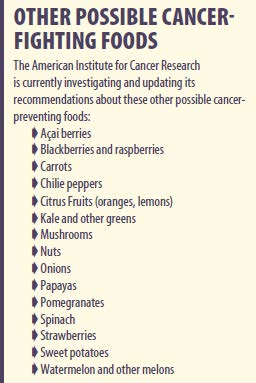
Broccoli & Other Cruciferous Vegetables
In addition to broccoli, nutrient-rich cruciferous vegetables include Brussels sprouts, rapini, cabbage, cauliflower and turnips. These have been studied for the cancer-fighting potential of sulfur compounds called glucosinolates, which in turn break down into isothiocyanates and indoles. These compounds decrease inflammation, a risk factor for cancer, and inhibit enzymes that activate carcinogens while stimulating others that de-activate carcinogens. Studies suggest glucosinolate compounds activate genes that suppress tumors and cause cancer cells to self-destruct.
According to the AICR, Earlier population studies found a strong link between greater consumption of cruciferous vegetables and lower risk of lung, colorectal, stomach, breast, prostate and other cancers. Among more recent, well-designed studies, the specific link between cruciferous vegetables and reduced cancer risk is not as consistent or strong. One reason may have to do with specific gene-diet interactions that are only now coming to light. For example, scientists recently found that about half of the population does not carry a specific gene involved in determining how long the body retains-and utilizes-protective cruciferous compounds from the diet.
Cruciferous vegetables also contain carotenoids, vitamin C, kaempferol, quercetin and anthocyanins.
Cherries
Extensive laboratory research has focused on the compounds in cherries called anthocyanins, which inhibit the growth of cancer cells and stimulate their self-destruction, without affecting healthy cells. A few studies of another cherry phytochemical, perillyl alcohol, suggest it stimulates self-destruction of abnormal cells and may inhibit cancer growth. Researchers have tested perillyl alcohol among people at high risk for or with some types of cancer, but much more needs to be learned about its dose and effectiveness.
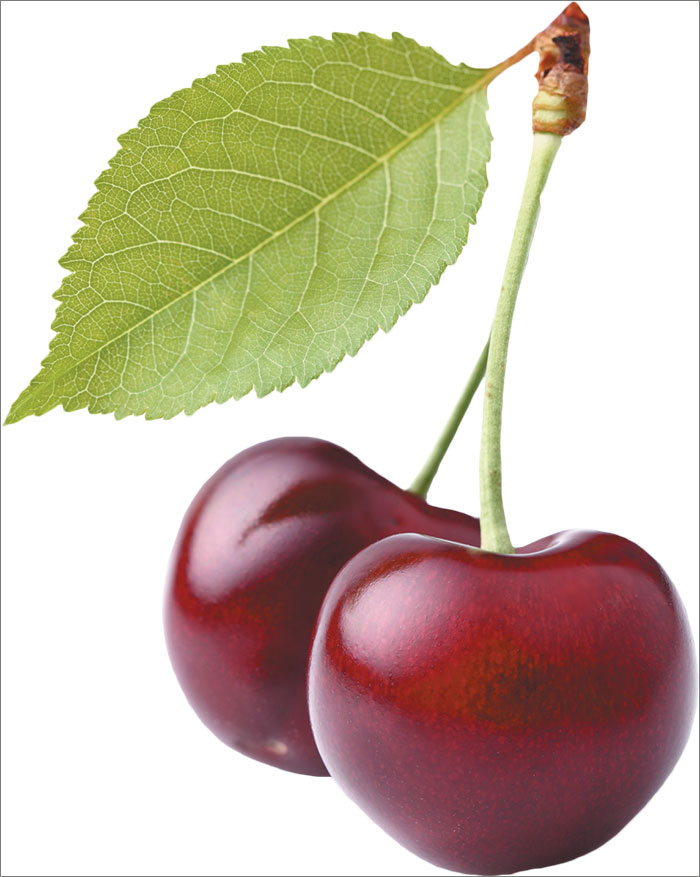
Coffee
A concentrated source of antioxidant phytochemicals, coffee contains chlorogenic acid, quinic acid and other compounds, as well as caffeine. More than a thousand studies have looked at coffee and cancer. While some early studies hinted that coffee might increase cancer risk, larger and more well-designed studies now suggest the opposite.
In some population studies, according to the AICR, people who drink moderate amounts of coffee daily show modestly reduced risk of a wide range of cancers, especially endometrial and liver cancers.
For colorectal cancer, caffeine may speed carcinogens passage through the digestive tract, reducing the bodys exposure, and may also affect cell signaling to decrease colorectal cancer development.
Cranberries
Good sources of vitamin C and dietary fiber, cranberries are high in antioxidant phytochemicals, including anthocyanins, proanthocyanidins, flavonols, ursolic acid, benzoic acid and hydroxycinnamic acid. In cell studies, cranberry compounds decrease damage to DNA that can lead to cancer, decrease the growth of growth cancer cells and encourage them to self-destruct. These compounds seem to work synergistically, providing more protection together than individually.
In limited animal studies, the AICR reports, those fed cranberries developed fewer and smaller cancers of several types when compared to animals not consuming cranberries.
Dark Green Leafy Vegetables
These include spinach, kale, romaine lettuce, leaf lettuce, mustard greens, collard greens, chicory and Swiss chard. Dark green leafy vegetables are excellent sources of fiber, folate and carotenoids such as lutein and zeaxanthin. Foods containing carotenoids seem to protect against cancers of the mouth, pharynx and larynx, likely by scouring potentially dangerous free radicals from the body. Some laboratory research, according to the AICR, has found that carotenoids in dark green leafy vegetables inhibit the growth of some breast, skin, lung and stomach cancer cells. Foods such as these that naturally contain folate may decrease the risk of pancreatic cancer.
Dry Beans and Peas
In addition to fiber and folate, legumes are a rich source of resistant starches. Healthful bacteria in the colon use these starches, which are not digested in the small intestine, to produce short-chain fatty acids, which seem to protect colon cells.
Dry beans, split peas and other legumes also contain a variety of phytochemicals that scientists are studying for anti-cancer effects. In laboratory studies, flavonoids found in legumes have slowed the development of cancers during several stages of development, apparently by directly affecting cell growth. Several human studies link higher consumption of legumes with lower risk of colon cancer or polyps; overall, however, these findings are inconsistent.
Flaxseed
Two components of flaxseed have drawn particular cancer-research attention: plant estrogens called lignans and alpha-linolenic acid (ALA), the plant form of omega-3 fat. In animals, flaxseed and lignans have been found to slow tumor growth and the spread of breast cancer. In humans, daily flaxseed decreased estrogen levels or shifted estrogen to a relatively inactive form less likely to promote breast-cancer growth.
Studies have looked at ALA and prostate cancer risk, but most recent overall analyses show no significant effect, according to the AICR. In a study of men with prostate cancer who either ate flaxseed, followed a low-fat diet or did both for about 30 days before surgery, each strategy reduced cancer cell growth compared to a control group, although the combination strategy produced best results.
In other animal studies, flaxseed and its oil decreased markers of inflammation, decreased the number and size of colon cancer tumors, and inhibited the growth and spread of prostate cancer.
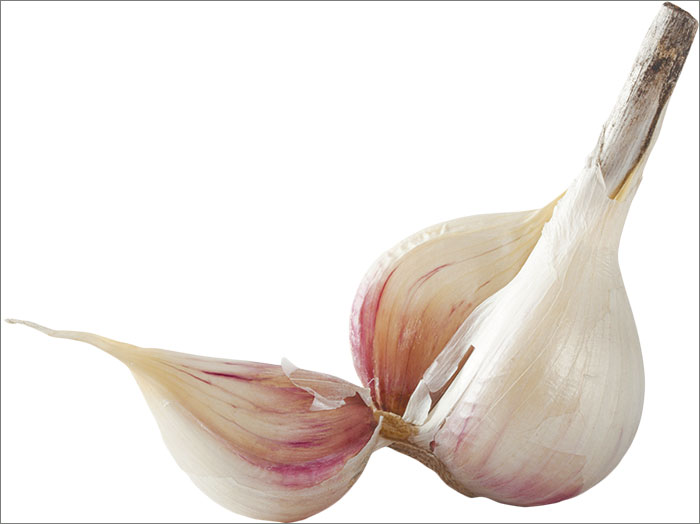
Garlic & Other Allium Vegetables
Garlic and its relatives in the allium family-onions, scallions, leeks and chives-likely protect against stomach cancer. Garlic, in particular, probably decreases the risk of developing colorectal cancer, with highest consumption linked to lowest risk, according to the AICR. Compounds in allium vegetables being studied for anti-cancer effects include quercetin, allixin and a large group of organic sulfur compounds. In laboratory and animal studies, components of allium vegetables have been shown to slow the development of cancers in various body sites. Laboratory research has also shown that one garlic component, diallyl disulfide, protects against cancers of the skin, colon and lung and can kill leukemia cells.
Grapefruit
Half a medium grapefruit provides at least half of your daily vitamin C, which protects DNA from damage by trapping free radicals and inhibiting carcinogen formation. Grapefruits also contain carotenoids and phytochemicals including naringenin and limonin. In cell and animal studies, naringenin and limonin have been found to decrease the growth and increase self-destruction of multiple cancers. Most human studies have looked at overall fruit consumption, but some have shown a lower risk of several cancers in people who consume more citrus fruit. (People taking certain medications, including statins, should avoid grapefruit, however.)
Grapes & Grape Juice
Both grapes and grape juice, especially red and purple varieties, are rich sources of resveratrol, which has antioxidant and anti-inflammatory properties. (See story in this issue.) Laboratory studies have shown that resveratrol prevents the damage that triggers the cancer process, slows the growth of cancer cells, and triggers the death of leukemic and colon cancer tumors. In one series of studies, the AICR notes, resveratrol blocked the development of skin, breast and leukemia cancers at all three stages of the disease (initiation, promotion and progression). The benefits of resveratrol in humans, however, remain speculative.
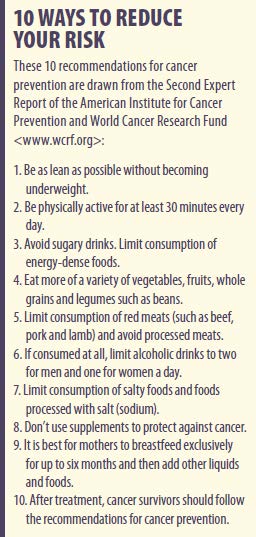
Green Tea
Green tea is the best source of phytochemicals called catechins, which have recently been studied for their anti-cancer potential. In laboratory studies, green tea has been shown to counter cancer development in colon, liver, breast and prostate cells. Other studies have found similar protective effects in tissues of the lung, skin and digestive tract. Human population studies have associated regular consumption of green tea with lower risk of bladder, colon, stomach, pancreatic and esophageal cancers.
Soy Foods
A good source of many nutrients that have been studied for cancer-prevention properties, soy foods also contain isoflavones, which are phytoestrogens that in some ways mimic the action of estrogen. It had been feared that, like high levels of estrogen, these might increase breast cancer risk; overall, however, human studies show soy foods do not increase risk and may even lower it. Population studies in Asia, where women consume moderate amounts of soy throughout their lives, link soy consumption with lower breast cancer risk. A handful of studies link soy or total isoflavone consumption with lower risk of lung and colon cancers, according to the AICR.
Randomized clinical trials have found no difference in hormone levels or breast density (a marker of increased breast cancer risk) between women assigned to consume moderate amounts of soy versus a control group. Some research suggests that how a person metabolizes isoflavones, a genetic factor, may play a role in lowering breast cancer risk.
Seven recent epidemiologic studies examining soy consumption among breast cancer survivors show that consuming moderate amounts of soy foods does not increase a womans risk for poorer outcomes.
Overall, trials have hinted that soy foods may lower PSA levels and may benefit prostate cancer survivors; none of the studies has demonstrated harm.
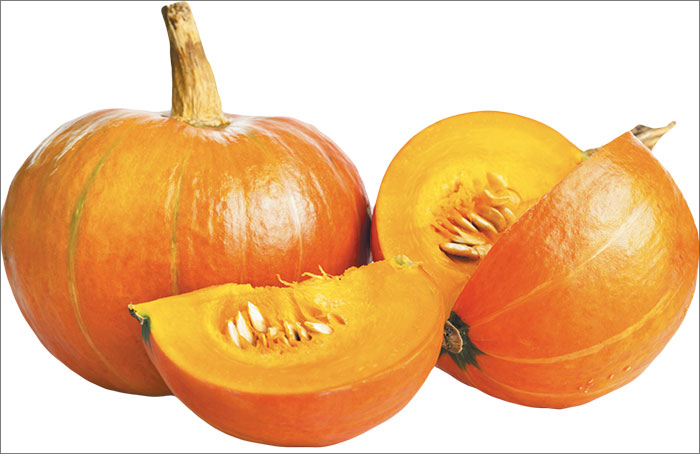
Squash (Winter)
Winter squash, including pumpkins, are rich in carotenoids, including beta-carotene, alpha-carotene, lutein and zeaxanthin. Laboratory studies show that beta- and alpha-carotene act as antioxidants and also promote cell-to-cell communication, helping control cell growth. A recent animal study suggests that dietary intake of lutein and zeaxanthin may decrease development of skin cancer related to sun exposure.
Population studies have linked higher levels of beta-carotene to lower risk of esophageal cancer and both beta-carotene and lutein to lower risk of renal cell cancer. Higher levels of alpha-carotene have been associated with fewer deaths from cancers of the esophagus, stomach, colon, liver, pancreas and larynx.
Tomatoes
The tomatos red color comes chiefly from lycopene, which has been studied for protective benefits against prostate cancer. AICRs most recent expert report found substantial and convincing evidence that foods containing lycopene probably protect against prostate cancer.
In laboratory studies, tomato components have stopped the proliferation of several other cancer-cell types, including breast, lung and endometrial. In animals, consumption of tomato compounds has been linked to significant decreases in prostate cancer risk. Processing and cooking allow more of tomatoes natural lycopene to be released and absorbed. (See our report on tomatoes in the July newsletter.)
Walnuts
Although all nuts have nutritional benefits, walnuts have been the most extensively studied for possible anti-cancer properties. They are rich in antioxidant phytochemicals as well as elligitannins, which are broken down to ellagic acid; gamma-tocopherol, a type of vitamin E; the omega-3 alpha-linolenic acid; phytosterols, plant compounds known to help lower blood cholesterol; and melatonin, a hormone and antioxidant. Several animal studies show that including walnuts in the diet slows or prevents the growth of breast and prostate cancers. According to the AICR, however, the evidence is currently too limited to draw any conclusions about walnuts-or any nuts-and cancer risk.
Whole Grains
In addition to dietary fiber, whole grains contain resistant starch, polyphenols, lignans, saponins, alkylresorcinols, phytic acid, protease inhibitors and tocotrienols-all under investigation for anti-cancer effects.
Because the insoluble fiber in whole grains does not get digested, it seems to protect against colorectal cancer by adding bulk and diluting any harmful substances in the gut, speeding their passage. In animal studies, both soluble and insoluble fiber as well as resistant starch also support the growth of healthful bacteria in the colon. AICRs analysis of population studies links greater consumption of whole grains and foods high in dietary fiber to a decrease in colorectal cancer. The protective association observed with whole grains was beyond what could be expected based on dietary fiber content alone, however. Between three and six ounces of daily whole grains were linked to a roughly 20% lower risk of colorectal cancer,Population studies of breast cancer and whole grains are more limited and mixed. One analysis found an association of dietary fiber intake of at least 25 grams a day and lower risk of breast cancer. Another study showed no overall association but did report lower risk among women with the highest blood levels of lignans, which are found in whole grains.
For more on all these foods, see the AICR website,
























